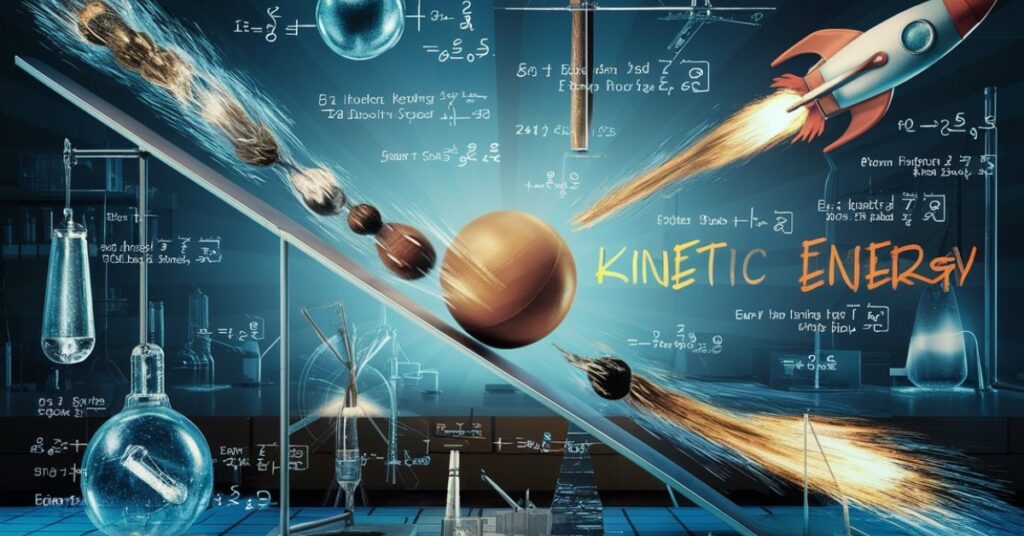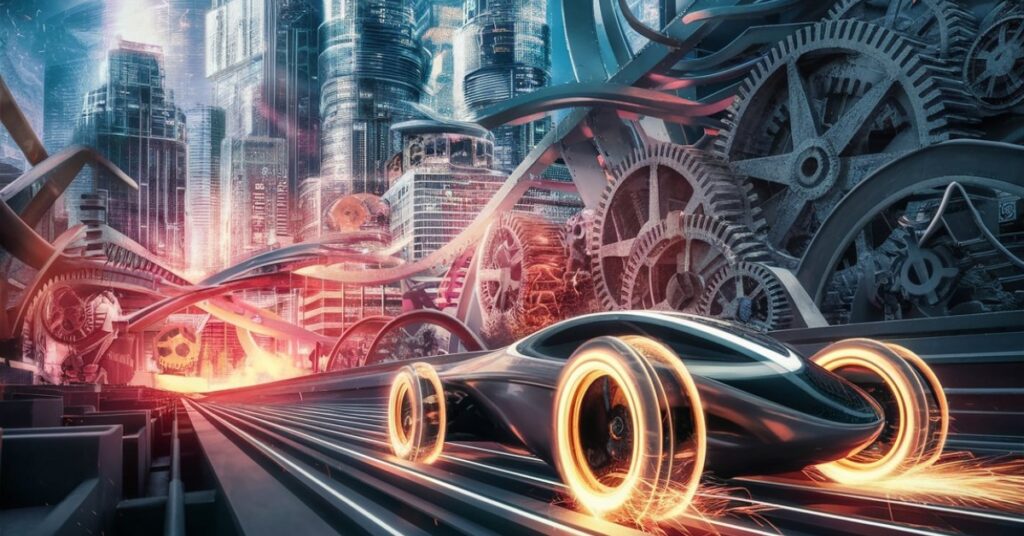Introduction
Mechanical energy is a cornerstone of our physical reality, pulsating through motion and transformation. It is present in various forms, from tree branches in the wind to industrial machinery. This exploration delves into the essence of mechanical energy, its significance, dynamics, and applications.
It aims to uncover its power to shape the world and propel humanity towards new horizons of understanding and innovation. Join us on this journey to unravel the intricate tapestry of mechanical energy.
What is Mechanical Energy?
Mechanical energy is the essence of motion and potential in the physical world, consisting of kinetic energy from object movement and potential within an object’s position. Kinetic energy drives the dynamic rhythm of existence, while potential energy holds the latent capacity for action.
Mechanical energy influences every aspect of our surroundings, shaping the natural world’s dynamics and underpinning numerous phenomena. Understanding mechanical energy helps illuminate the interconnectedness of motion and potential. Providing insight into the fundamental forces driving the universe forward.
The Dynamics of Kinetic Energy

Kinetic energy, the pulsating energy of motion, is the energy possessed by objects, determined by their mass and velocity. It infuses our surroundings with vitality and dynamism, driving the pursuit of momentum.
Understanding the dynamics of kinetic energy reveals. The intricate interplay between motion and energy transfer, illuminating the forces shaping our physical reality. Embracing the essence of kinetic energy opens a gateway to harnessing its power. Offering opportunities for innovation and exploration in science, engineering, and beyond.
The Potential within Potential Energy
Potential energy, a silent force within the universe, is the energy stored within an object’s position or configuration, ready to be unleashed upon the world. It brims with latent power, ready for transformation.
Understanding the potential within potential energy reveals the hidden dynamics of the physical world and the interconnectedness of position and energy. Harnessing this force opens pathways to innovation and exploration, offering boundless opportunities to unlock the mysteries of the cosmos and shape humanity’s destiny.
Conservation Laws: Preserving Mechanical Energy
Conservation laws protect the balance of mechanical energy, ensuring that total energy remains constant within a closed system. This principle highlights the interconnectedness of kinetic and potential energy, highlighting the importance of conservation.
Understanding these laws helps us understand the dynamics of motion and transformation, providing insight into the fundamental principles shaping our physical reality. By embracing these laws, we can unlock the mysteries of the universe and harness the boundless potential of mechanical energy for humanity’s betterment.
The Intersection of Work and Mechanical Energy
The relationship between work and mechanical energy is crucial for transforming potential into action. Work involves the transfer of energy through force over a distance, transforming the potency of mechanical energy into tangible effects.
This dynamic interplay between force, distance, and transformation is essential for understanding the mechanics governing the physical world and our everyday experiences. By harnessing the synergy between work and mechanical energy, we can achieve remarkable feats of innovation, productivity, and progress, propelling humanity towards new horizons of discovery and achievement.
Unveiling the Mechanics: How Machines Harness Energy

Mechanical energy is a crucial component in the functioning of machines, which harness it for various functions. From simple mechanisms like levers and pulleys to complex engines and turbines, machines convert input energy into desired outputs, enhancing our capabilities and extending human endeavor.
Understanding the intricate mechanics of machines provides insights into energy conversion and transmission principles. Machines, like factory assembly lines and robotic arms, symbolize the fusion of innovation and ingenuity, driving progress and prosperity. By embracing the mechanics of machines, we can revolutionize industries, enhance productivity, and shape technological advancement for future generations.
From Rollercoasters to Rockets: Examples of Mechanical Energy in Action
Mechanical energy is a powerful force that powers thrilling experiences, from the thrilling twists and turns of roller coasters to the awe-inspiring ascent of rockets. Roller coasters showcase the fusion of kinetic and potential energy, as gravity pulls riders down dizzying descents and propels them up towering inclines.
On the other hand, rockets harness the explosive force of combustion to ascend beyond Earth’s grasp, demonstrating the boundless potential of energy. These experiences showcase the raw power and beauty of energy in action, deepening our appreciation for the wonders of the physical world and inspiring us to explore new frontiers and push the boundaries of human achievement.
Engineering the Future: Applications of Mechanical Energy
Mechanical is a crucial component in the future of engineering, driving innovation and progress. It powers vehicles, trains, and airplanes, enabling efficient movement of people and goods. Renewable energy technologies like wind turbines and hydroelectric dams generate clean electricity from energy.
In manufacturing, machines powered by streamline processes, increasing efficiency and productivity. Robotics revolutionizes industries by automating tasks with precision and reliability. Mechanical plays a pivotal role in shaping infrastructure and healthcare, promoting responsible use, optimized technologies, and innovation.
Overcoming Obstacles: Challenges and Innovations
Mechanical faces challenges and opportunities due to finite fossil fuel reserves and environmental concerns. Renewable energy technologies like solar and wind power offer potential solutions. Mechanical systems require meticulous engineering and design to optimize performance and reduce inefficiencies.
Advancements in materials science and automation enable more efficient machinery. A holistic approach combining technological innovation with environmental stewardship is needed to navigate these obstacles and drive towards a future where powers sustainable, efficient, and equitable solutions for generations to come.
Conclusion: Embracing the Force of Mechanical Energy
Mechanical energy, the cornerstone of our physical reality, is a powerful force that shapes our dynamics of motion, transformation, and progress. By understanding its essence and harnessing its power, we can unlock potential and propel humanity towards a brighter future.
From wind turbines to rocket engines, permeates our lives, driving us forward. As stewards of this force, we have the responsibility to prioritize sustainability, efficiency, and innovation. By embracing, we embark on a journey of discovery, exploration, and achievement, shaping humanity’s destiny and collective future.

